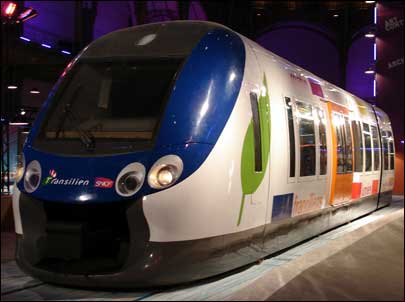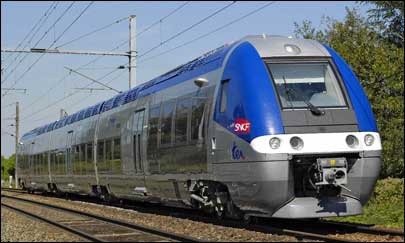This fall, French public transportation company SNCF intends to begin employing RFID-enabled smart cards with USB connectivity, in order to allow users to plug the cards into a PC or laptop, automatically connect to the SNCF Web site and add funds to the cards from home. Approximately 1,000 SNCF customers will pilot the Weneo smart cards as part of the company’s home-payment effort.
The system, known as Weneo ID Smart, is being provided by contactless technology startup firm Neowave. The pilot is part of SNCF’s push into contactless payment options for all of the company’s customers, either through NFC cards, such as some customers are already utilizing, or via payment devices, such as the Weneo ID Smart.

The Weneo ID pilot will take place in four as-yet-unnamed regions of France. If the system is well received by transit customers, says Joël Eppe, chief of SNCF’s Innovation and Technologies Department, SNFC could expand the solution nationwide in 2010.
SNCF customers currently use contactless payment cards in 10 regions throughout France. Patrons can upload payments onto the cards using contactless payment readers in a particular station, then use the payments for train rides. The cost of each ride is deducted from the cards either by RFID readers deployed in the stations, or by SNCF train staffers carrying handheld interrogators.
The Weneo ID Smart device comes with USB connectivity, says Michel Leduc, Neowave’s VP of marketing and sales. This allows users to transfer data from the smart card to a PC, and from the PC to the payment device, either directly through a USB connection, or using a Flash drive.The device can store information on one chip with up to 4 Gigabytes of memory. Data on the card will include the cardholder’s name and personalized information—whether that person is a student or senior citizen, for instance, or the amount of money the cardholder has available for purchases or transit tickets—along with other data, such as transit schedules that can be downloaded from the Internet. A second chip, for the RFID function, operates independently of the USB-stored data, and holds a unique ID number that is transmitted at the transit station when a passenger passes through a turnstile. Thus, the cost of the ticket is automatically deducted from the user’s prepaid balance.
The fall deployment will enable commuters to purchase a Weneo ID Smart card either at an SNCF ticket counter, from a participating store or via mail when ordered on the Internet. The user then takes a picture of himself or herself at an SNCF kiosk or other location, and inserts the hard-copy picture in the front of the card, in a dedicated slot that locks to ensure the picture cannot be removed and replaced by an identity thief. The picture can be used by SNCF in the event that the company needs to guarantee the cardholder’s authenticity. The device can be connected to a PC or laptop via a USB connection, which automatically connects that person to the SNCF Web site, where the patron can enroll and make payments for future mass-transit use.

The card has a built-in passive 13.56 MHz RFID tag based on the ISO 14443 standard, and encoded with a unique ID number that will be linked to cardholder-related data stored in the back-end system. At the transit station, the user can place the card within a few centimeters of an RFID interrogator located at the entrance turnstile. The ID number is transmitted to SNCF’s back-end system, which is then linked to the cardholder’s financial data and can deduct the cost of the transit ticket from a prepaid amount provided by the cardholder. The account’s value can be stored on the card as well, Leduc says. Because SNCF already has RFID-enabled readers for use with smart-card systems, the transit company will not have to add any reader infrastructure.
The device is credit-card sized, and thin enough to fit into a purse, pocket or wallet. Users can update personal information on the card, such as where they travel, and receive any changes to transit schedules in that area, with their USB drive. SNCF, meanwhile, could use the device to provide further information to users, such as maps, train schedules, advertising and promotions—all of which can be stored on the Weneo device after the user downloads it from the SNCF Web site.
“Our objectives for this pilot are to measure the customers’ appeal for these solutions, and to give a try to the technical solution of home buying,” Eppe says. “We hope to be able to provide soon all of these new ticketing-supports, to make public transport even easier and more comfortable for the customer.”

